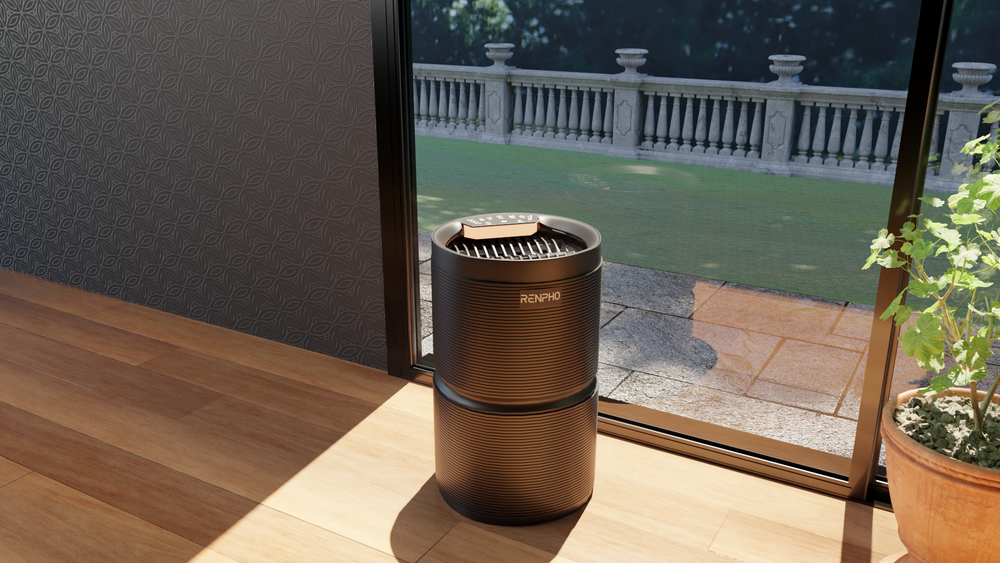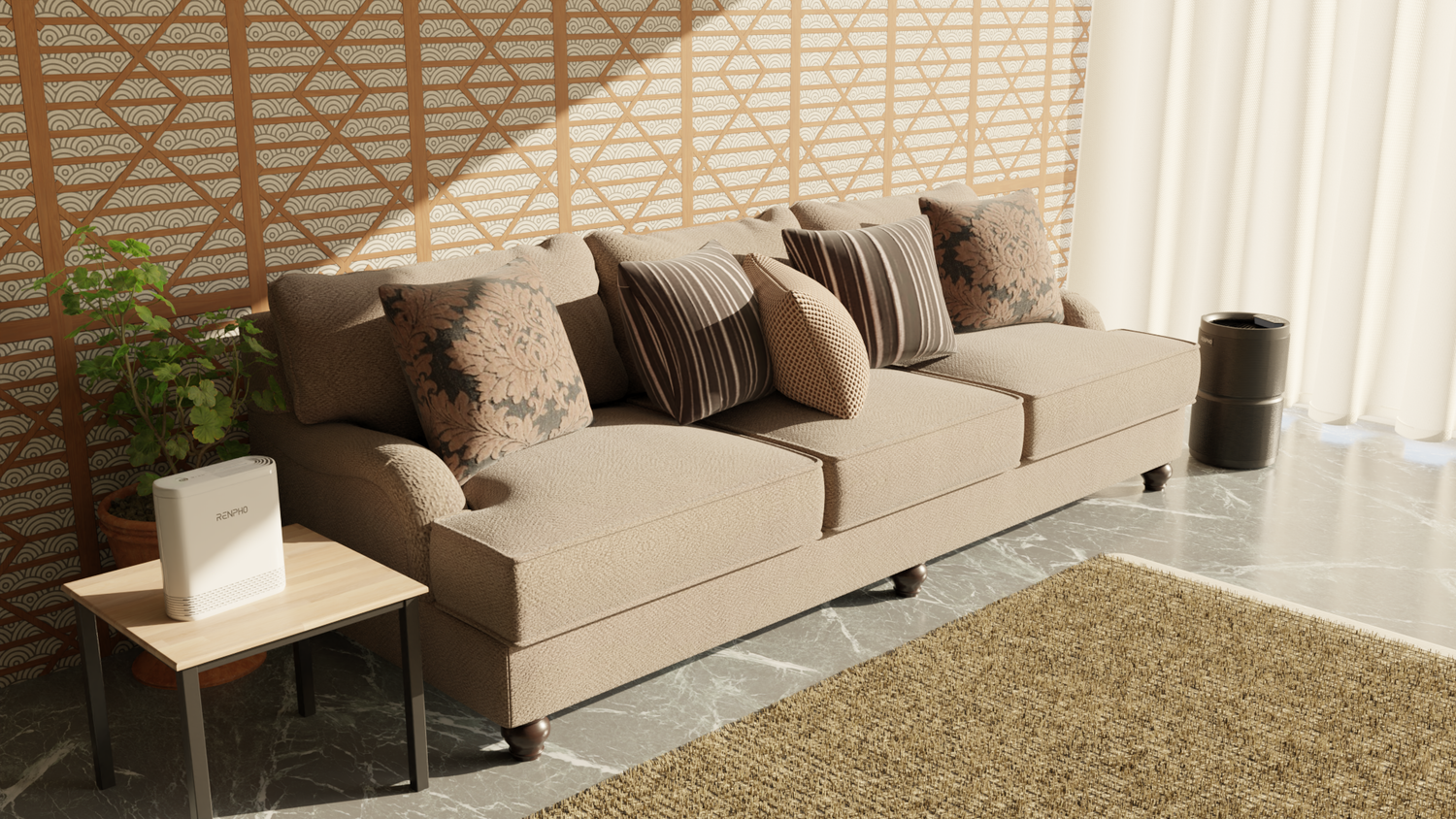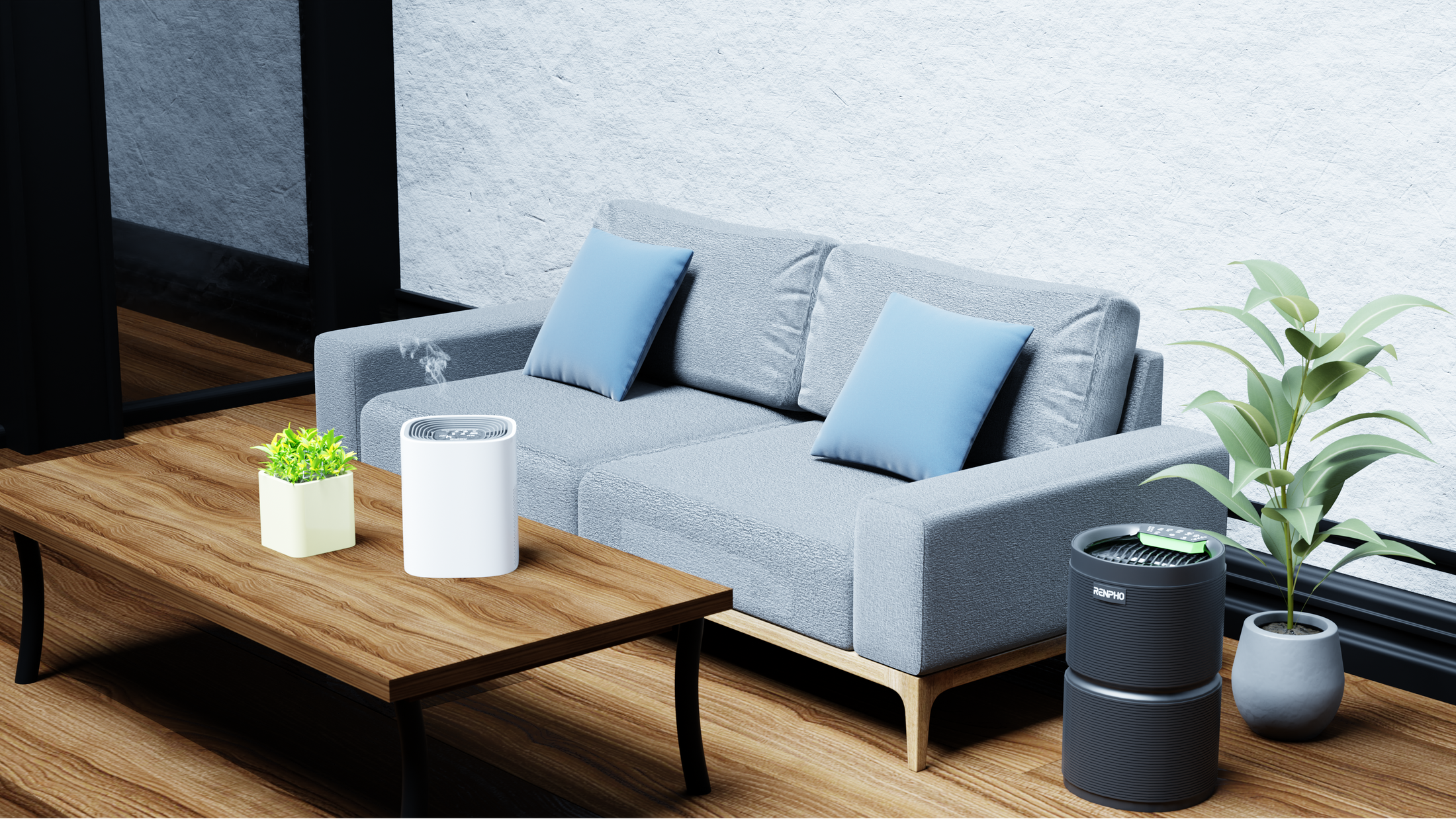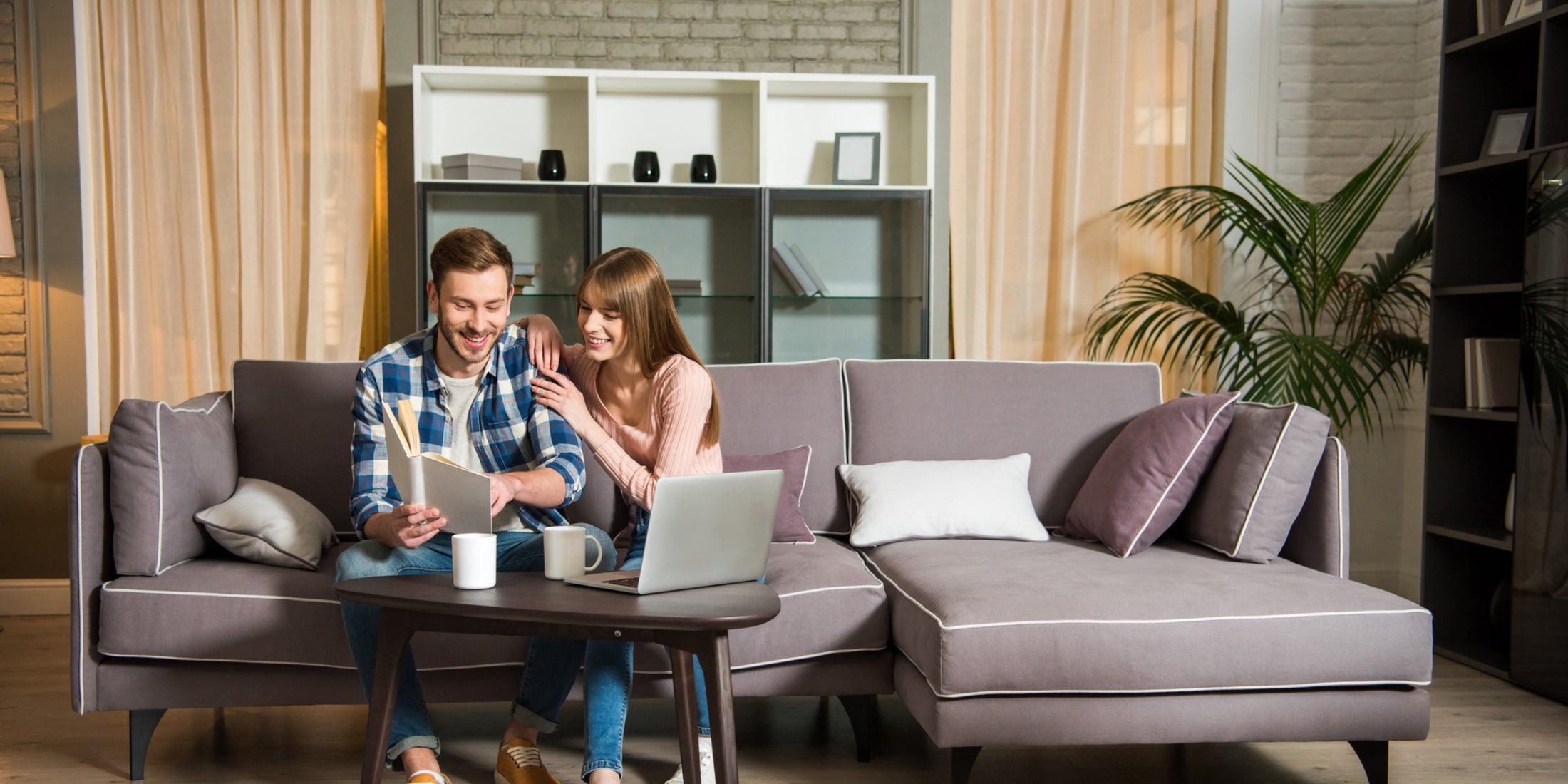No Fresh Air? 5 Common Reasons Why Your Air Purifier Is Not Working Properly

Stay tuned to our latest news
While the world strives to adopt a cleaner and more sustainable lifestyle, ensuring clean and fresh air indoors remains a top priority due to persistent pollution. Therefore, having an air purifier has become commonplace in many households to combat indoor air pollution. These devices work tirelessly to filter out contaminants, providing us with cleaner and healthier air to breathe. However, what happens when your air purifier doesn't seem to be working as effectively as it should? It can be frustrating and concerning, especially when you rely on it to maintain a healthy environment.
In this blog, let's explore five common reasons why your air purifier might not be working properly. By understanding these potential issues, you'll be better equipped to troubleshoot and rectify the problem, ensuring that you and your loved ones can continue to enjoy the benefits of clean and fresh air. So, let's dive in and uncover the mysteries behind an underperforming air purifier.
4 Types of Air Purifiers

There are various types of air purifiers available, each designed to cater to different air quality needs. Understanding the different types of air purifiers and their unique filtration methods can help consumers make an informed decision when choosing the right one for their home or office. From HEPA filters to activated carbon filters, each type of air purifier has its own specific advantages and limitations. By exploring the different types of air purifiers, consumers can select the best option to effectively remove allergens, pollutants, and other contaminants from their living spaces.
-
Ultraviolet Air Purifiers
Ultraviolet air purifiers use UV-C light technology to decontaminate both air and surfaces in a room. UV-C light, known for its effectiveness in killing bacteria, viruses, and other pathogens, is combined with multi-stage filtration systems to ensure thorough decontamination of the air. UV-C lamps are commonly used in these air purifiers for sterilization and mold prevention.
There are different types of ultraviolet light used in air purification, with UV-C light being the most effective for killing germs and pathogens. UV-C lamps are commonly used for sterilization and mold prevention because they emit a specific wavelength of light that is lethal to microorganisms.
Ideal settings and specifications for UV air purifiers include the use of multi-stage filtration systems to capture particles and impurities in the air, as well as the appropriate wattage of UV-C lights to effectively kill pathogens. It is important to ensure that the air purifier is appropriately sized for the room in which it will be used to maximize its effectiveness in decontaminating the air.
-
HEPA Air Purifiers
HEPA (High Efficiency Particulate Air) air purifiers like the RENPHO Smart Air Purifier 089 are beneficial devices designed to improve indoor air quality by trapping small airborne particles such as pollen, dust, bacteria, and mold. These purifiers work by drawing in air and passing it through a fine mesh filter, which effectively captures particles as small as 0.3 microns with an efficiency of 99.97%.
In addition to trapping particles, some HEPA air purifiers also include a gas filter for general gas and odor removal. This extra feature enhances the overall air-cleansing capabilities of the purifier, making it a versatile choice for improving indoor air quality.
Overall, HEPA air purifiers are effective in removing small airborne particles, and when considering a purchase, it's important to pay attention to MERV ratings, CADR numbers, and the inclusion of a gas filter for comprehensive air purification.
-
Carbon Filters
Carbon filters are designed to remove volatile organic compounds (VOCs) from the air. VOCs, emitted from various solids and liquids, such as paints, cleaning supplies, and building materials, can have harmful effects on human health. They are highly effective in removing these compounds from the air through a process called adsorption, where the VOCs are attracted to the porous surface of the carbon and then trapped in the filter.
These filters differ from high-efficiency air filters in that they are specifically designed to remove gases and odors, while high-efficiency filters are primarily focused on removing particles such as dust, pollen, and mold spores. While high-efficiency filters are effective at removing particulate matter, they are not as effective at removing gases and VOCs from the air.
Carbon filters are particularly effective at eliminating VOCs from sources like paint, furniture, flooring, cleaning products, and cooking fumes. By effectively removing these harmful compounds from the air, carbon filters can help improve indoor air quality and reduce the risk of respiratory and other health issues associated with exposure to VOCs.
-
Ionic air purifiers
Ionic air purifiers use electrostatic attraction to remove airborne particles from the air. They work by charging the particles in the air with a negative charge, causing them to be attracted to a positively charged plate or filter within the purifier. This process effectively removes pollutants such as dust, pollen, and pet dander from the air.
Some ionic air purifiers also produce ozone as a byproduct. Ozone is a molecule made up of three oxygen atoms and is effective in neutralizing odors and killing bacteria and viruses. However, high levels of ozone can be harmful to human health, so it is important to use caution when choosing an ionic air purifier that produces ozone.
In comparison, HEPA filter-based purifiers use physical filtration to capture particles in the air. These purifiers are highly effective at removing airborne pollutants but may not be as effective at neutralizing odors or killing bacteria and viruses.
5 Reasons Why Your Air Purifier is Not Working Properly

If you've noticed that your air purifier is not working as it should, there could be a variety of reasons why you are experiencing issues. From simple maintenance problems to more serious malfunctions, understanding the top reasons why your air purifier is not working can help you troubleshoot and resolve the issue quickly. With that said, let's take a look at some of the most common reasons why your air purifier may not be working properly and what you can do to fix it.
-
Air Purifier Is Too Small for the Room
One of the most common reasons for the ineffectiveness of your air purifier is its size concerning the room it is intended to clean. If it is undersized for the room, it may struggle to effectively circulate and purify the air, leaving you with subpar air quality.
Additionally, an undersized purifier might take longer to cycle the air in the room. It may not be able to complete a full air exchange within a reasonable time frame. This can be problematic, especially if you are dealing with specific concerns like allergens, smoke, or volatile organic compounds (VOCs). These pollutants can accumulate in the air, causing discomfort and potential health issues if not effectively removed.
To address this issue, it's crucial to ensure that you select a purifier with the appropriate coverage area for the room or space you intend to use it in. If you already have a purifier that is too small for your room, it might be worth considering upgrading to a larger model or adding additional units to cover the entire space adequately. This way, you can enhance the air purification process and enjoy clean and fresh air throughout the room.
-
Air Purifier Is Too Close to a Wall
When setting up your air purifier, it's important to ensure that it is at least a couple of inches away from the wall. Placing it too close to the wall can restrict proper air circulation, reducing its effectiveness in purifying the indoor air. Additionally, avoid placing it in a corner, as this can also limit air circulation. Providing enough space for the air purifier to operate effectively is crucial in maintaining good indoor air quality.
To optimize the performance of your air purifier, consider placing it in a central location within the room, away from walls and corners. This will allow for proper air circulation, ensuring that the air purifier can effectively capture and eliminate airborne contaminants. By following these placement guidelines, you can maximize the benefits of your air purifier and maintain cleaner and healthier indoor air.
-
Air Purifier is on Too Low a Setting
When the air purifier is set too low, it may not effectively filter out pollutants, allergens, and other airborne particles, leaving the air quality compromised. In order to ensure proper air purification, it is important to adjust the air purifier to a higher setting.
Before making any adjustments, it is advisable to use an air quality meter to check the current air quality in the room. This will help determine if running the air purifier on a lower setting is adequate or if a higher setting is necessary for optimal air purification. Once the air quality is assessed, the air purifier can be adjusted to a higher setting to ensure that it effectively removes pollutants and maintains a clean and healthy indoor environment.
By increasing the air purifier to a higher setting, the unit will be able to efficiently filter and purify the air, providing better air quality for everyone in the room.
-
Air Purifier Needs to Be Cleaned
To properly maintain an air purifier, it is important to regularly clean and replace its various components. Begin by vacuuming the pre-filter to remove any dust and larger particles. The fabric pre-filter can be removed and cleaned in the washing machine according to the manufacturer's instructions. The sensors should also be cleaned as directed in the user manual to ensure they function properly.
When it comes time to replace the main filter, carefully follow the manufacturer's instructions for removing and disposing of the old filter. Install the new filter according to the provided guidelines, and then reset the filter light indicator to ensure accurate monitoring of when the next replacement is needed.
-
Air Purifier Filter Needs Replacing
To replace the air purifier filter, start by consulting the manufacturer's instructions for your specific model. Turn off the air purifier and unplug it from the power source. Open the front panel or access the filter compartment according to the instructions. Remove the old filter and dispose of it properly. Insert the new air purifier filter, ensuring it fits securely in place and follows the correct orientation as indicated in the manual. Close the front panel or filter compartment.
Now, to reset the filter light indicator, plug in the air purifier and turn it on. Press and hold the filter reset button for the designated amount of time specified in the manufacturer's instructions. This action will reset the filter light indicator, signaling that the new filter has been installed and the indicator has been recalibrated.
For optimal function and to maintain the warranty, use replacement parts from the original manufacturer. Using non-genuine parts may compromise the effectiveness and lifespan of the air purifier. Following these steps and using genuine replacement parts will ensure that the air purifier continues to operate at its best and provide clean air for your space.
Takeaway
Ensuring clean and fresh air indoors is essential for maintaining a healthy environment. Air purifiers have become common household appliances to combat indoor air pollution. However, there are instances when an air purifier may not work as effectively as it should. These reasons include using a purifier that is too small for the room, placing it too close to a wall, running it on a low setting, neglecting cleaning, and failing to replace the filter. By understanding these potential issues and taking appropriate actions, users can troubleshoot and rectify problems with their air purifiers. This ensures cleaner and healthier indoor air for themselves and their loved ones.
Renpho Health Tips
-

Hot or Not? Can Air Purifiers Really Cool Your Space?
January 18, 2024
Read more >
-

Breathe Your Way to Well-Being: The Science and Practice of Breathing Techniques
January 10, 2024
Read more >
-

Air Purifiers vs. Humidifiers: Which One is Right for You?
January 5, 2024
Read more >
-

RENPHO's Guide to Decluttering and Organizing Your Home
December 27, 2023
Read more >
-

How to Hygge Your Home: A Guide to Creating a Cozy and Relaxing Atmosphere
December 6, 2023
Read more >




